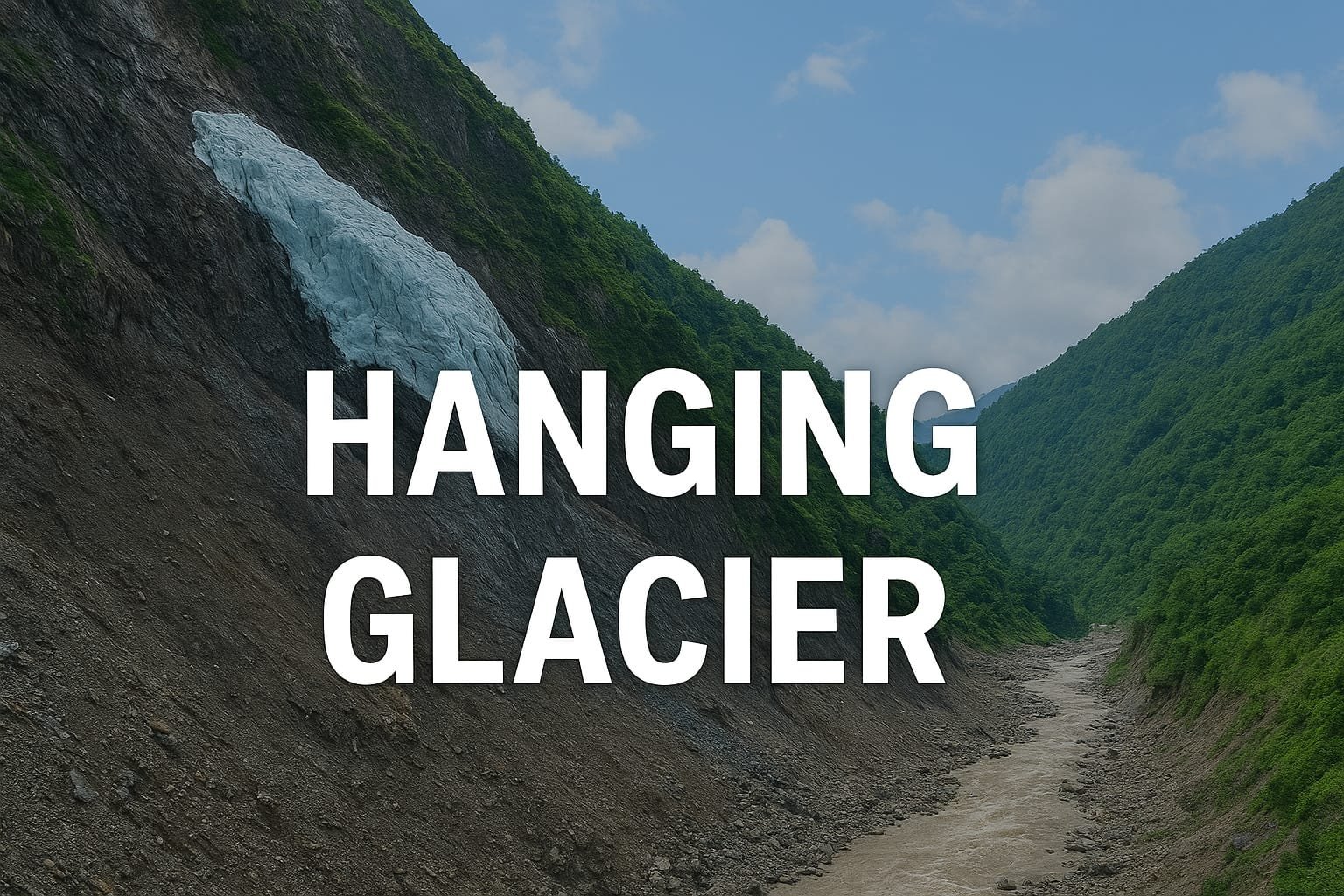
Natural disasters often feel sudden, but scientists remind us that many of them have long histories hidden in the mountains, rivers, and glaciers. The recent flash floods in Uttarakhand are a strong example. A team from the Indian Institute of Science (IISc) has suggested that a “hanging glacier” in the Kheer Ganga channel might have been the real trigger behind the destruction in Dharali on August 5. This discovery is not just about one disaster. It is all about how fragile our mountains are and how carefully we must deal with them.
A hanging glacier, as scientists explain, is one that clings to the side of a steep mountain wall and often descends only part of the way down. Unlike glaciers that flow steadily into valleys, these glaciers sit perched high above, making them unstable. When chunks of ice or debris from them fall, they can set off floods and landslides. Uttarakhand has more than two hundred such glaciers in the Alaknanda and Bhagirathi basins, which are considered risky.
The IISc team used satellite images and geospatial mapping to piece together for knowing what really happened. They noticed that before the flash floods, rainfall was not exceptionally heavy. In fact, the flow of the Bhagirathi River had been steady and even showed signs of decline. Then came the sudden surge. It suggested that the water had been temporarily blocked and then released all at once. The drawn conclusion was that a hanging glacier had collapsed, forming a temporary lake that burst and sent walls of water and debris downstream.
If we think about it, this is very different from the usual idea of flash floods caused simply by heavy rainfall. It shows how glaciers, rainfall, and geography interact in dangerous ways. In simple terms, the glacier collapse acted like a plug in a bottle. Once the plug gave way, the water roared down with unstoppable force.
The Indian Army and disaster response teams have been working in the region to locate missing people and clear the debris. Devices like ground penetrating radars have been flown in from Siachen to help in rescue efforts. But the bigger issue remains. How many other hanging glaciers are waiting to collapse? Can we predict the next disaster before it happens?
Experts say it is possible but requires systematic monitoring. Hanging glaciers can be mapped using satellites, and their cracks or movements can be tracked. The problem is that mountain ecosystems are changing quickly because of climate change. Rising temperatures make glaciers more unstable, and unplanned construction in fragile hill zones makes the damage worse when disasters strike. Roads, tunnels, and hydropower projects, while useful, often cut into slopes and make them weaker. The floods are not just a natural tragedy. They are also linked to human choices.
In fact, the Himalayan Nagarik Drishti Shakti Manch and other civil groups have been warning about such risks. They point out that the Bhagirathi Eco-Sensitive Zone has rules meant to control reckless construction. But these rules are often ignored. After every disaster, we hear discussions about stricter regulations, yet the same mistakes are repeated. The Uttarakhand floods are a painful reminder that development in the Himalayas must be balanced with safety and respect for nature.
At the same time, it would not be right to see the mountains only as zones of danger. They are home to millions of people who depend on them for water, farming, tourism, and livelihoods. The challenge is to make the mountains safer without stopping life there. This can be done with better planning. For example, instead of building on riverbeds or steep slopes, safer zones should be chosen for housing. Instead of large-scale blasting for highways, tunnels can be designed with stronger safeguards. And most importantly, disaster response systems need to become faster and more local. Villagers should be trained in evacuation drills and early warning systems.
There is also a lesson in how science and local knowledge can come together. Scientists can study satellite data and model glacier behavior, but local people often notice changes in the land much earlier. Cracks on slopes, new streams forming, or unusual sounds from glaciers can all be early signs of trouble. If villagers are encouraged to share these warnings, and authorities take them seriously, lives can be saved.
So, what do we learn from the Uttarakhand floods? The hanging glacier collapse shows that the Himalayas are a living system, not a stable block of rock and ice. They move, melt, and reshape themselves. Climate change adds to the stress, and human activity multiplies the risks. Ignoring this reality is costly. Respecting it can help us live more safely with nature.
In the end, the disaster is not only a story of destruction. It is also a wake-up call. We cannot stop glaciers from melting, but we can stop building carelessly. We cannot control the rain, but we can control how prepared we are when it comes. If Uttarakhand’s tragedy teaches us these lessons, then perhaps the loss will not have been entirely in vain. Nature has spoken, and it is our turn to listen.





















